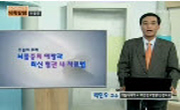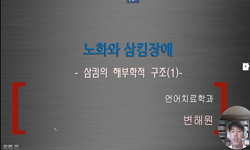목적 : 본 연구는 뇌졸중 환자에게 적용한 연하재활치료를 체계적으로 분석한 논문이다. 연하재활치료에 영 향을 주는 요소들을 살펴보고, 연하장애 증상과 치료의 효과에 따른 연하재활치...
http://chineseinput.net/에서 pinyin(병음)방식으로 중국어를 변환할 수 있습니다.
변환된 중국어를 복사하여 사용하시면 됩니다.
- 中文 을 입력하시려면 zhongwen을 입력하시고 space를누르시면됩니다.
- 北京 을 입력하시려면 beijing을 입력하시고 space를 누르시면 됩니다.
https://www.riss.kr/link?id=A105441907
- 저자
- 발행기관
- 학술지명
- 권호사항
-
발행연도
2018
-
작성언어
Korean
-
주제어
뇌졸중 ; 연하장애 ; 연하재활치료 ; Dysphagia ; Stroke ; Swallowing Disorder ; Swallowing Rehabilitation
-
등재정보
KCI등재
-
자료형태
학술저널
- 발행기관 URL
-
수록면
113-128(16쪽)
-
KCI 피인용횟수
1
-
비고
학회 요청에 의해 무료로 제공
- DOI식별코드
- 제공처
-
0
상세조회 -
0
다운로드
부가정보
국문 초록 (Abstract)
목적 : 본 연구는 뇌졸중 환자에게 적용한 연하재활치료를 체계적으로 분석한 논문이다. 연하재활치료에 영 향을 주는 요소들을 살펴보고, 연하장애 증상과 치료의 효과에 따른 연하재활치료 방법을 제시하였다. 이를 통하여 환자의 특성에 맞는 효과적인 치료 방법을 선택할 수 있도록 근거 자료를 제공하고자 한다. 연구방법 : PRISMA(Preferred Reporting Items for Systematic Reviews and Meta-Analyses) 체크리스트 및 흐름도를 이용하여 체계적 고찰을 시행하였다. 데이터베이스는 PubMed, Medline Complete(EBSCOhost), 국회 도서관(national assembly library of Korea)을 이용하였다. 연구에 사용된 문헌의 수는 총 18편이었고, 문헌의 질을 평가하기 위하여 PEDro scale(Physiotherapy Evidence Database scale)을 사용하였다. 문헌에서 사용한 연하재활치료들은 치료의 효과와 연하장애 증상에 따라 각각 분류하였다. 결과 : 분석된 논문에서 병변 부위는 대뇌반구와 뇌간 부위가 혼합된 연구 10편, 대뇌피질 부위 연구는 6 편, 뇌간 부위 연구는 1편이었고, 병변 부위가 기록되지 않은 연구가 1편이었다. 발병 시기는 급성과 만 성이 혼합된 연구 13편, 3개월 미만의 급성기 환자를 대상으로 한 연구 3편, 3개월 이상의 만성기 환자 를 대상으로 한 연구 1편이었고, 발병 시기가 기록되지 않은 연구가 1편이었다. 총 14가지의 치료방법 중 인두기에 효과를 보인 치료가 14건, 구강기에 효과를 보인 치료와 식이 단계에 효과를 보인 치료가 각각 1건이었다. 연하장애의 임상 증상에 따라 치료방법을 분류하였다. 가장 많은 치료방법이 적용된 증 상은 구강인두 기능저하로 총 7가지의 치료 방법이 제시되었다. 설골과 후두의 앞-위쪽 움직임 저하는 6가지, 흡인과 침습은 4가지, 삼킴반사 지연은 3가지, 혀의 근력 약화, 후두개 잔여물, 음식덩이의 인두 통과시간 지연, 그리고 삼킬 때의 통증은 각각 1가지의 치료 방법이 제시되었다. 결론 : 본 연구는 작업치료사들이 뇌졸중 환자의 연하장애 증상에 따라 다양한 치료방법을 적용시킴으로써 효율적인 연하재활치료를 제공하는데 도움을 줄 수 있을 것이다.
다국어 초록 (Multilingual Abstract)
Objective: This study is a systematic analysis of swallowing rehabilitation treatment applied to stroke patients. The method of swallowing rehabilitation treatment according to the symptom of swallowing disorder and the effect of treatment was present...
Objective: This study is a systematic analysis of swallowing rehabilitation treatment applied to stroke patients. The method of swallowing rehabilitation treatment according to the symptom of swallowing disorder and the effect of treatment was presented. The purpose of this study is to provide the data for selecting the effective treatment method according to the characteristics of the patients. Methods: A systematic review was conducted using the PRISMA checklist and flow charts. The database used PubMed, Medline Complete (EBSCOhost), and National Assembly Library of Korea. A total of 18 articles were used in the study and the PEDro scale (Physiotherapy Evidence Database scale) was used to evaluate the quality of the literature. In the literature, swallowing rehabilitation treatments were classified according to treatment effect and swallowing disorder symptoms. Results: In the analyzed study, 10 lesions were mixed with brain hemispheres and brainstem, 6 lesions were examined in cerebral cortex lesion, 1 brain lesion was examined, and 1 lesion was not recorded. There were 13 episodes of acute and chronic mixed episodes, 3 episodes of acute episodes of less than 3 months, and 1 episode of chronic episodes of 3 months or more. . Of the 14 treatments, 14 were effective on the irritation, and 1 was effective on the oral cavity and one on the diet. Methods of treatment were classified according to clinical symptoms of dysphagia. The most common treatment modalities were oral pharyngeal dysfunction and total 7 treatments. There are six different types of frontal and laryngeal movements of the hyoid and larynx, four types of aspiration and invasion, three delays in swallowing reflexes, weakness of the tongue, epiglottis residues, food pockets and temporal lag, Each treatment method was presented. Conclusion: This study may help occupational therapists to provide effective swallowing rehabilitation by applying various treatment modalities according to swallowing disorder symptoms of stroke patients.
목차 (Table of Contents)
- 국문초록
- Ⅰ. 서론
- Ⅱ. 연구 방법
- 1. 연구설계
- 2. 문헌검색전략
- 국문초록
- Ⅰ. 서론
- Ⅱ. 연구 방법
- 1. 연구설계
- 2. 문헌검색전략
- 3. 문헌선택과정
- 4. 문헌의 질 평가
- 5. 분석방법
- Ⅲ. 연구 결과
- 1. 분석대상 논문의 특성
- 2. 치료방법의 분류
- Ⅳ. 고찰
- References
- Abstract
참고문헌 (Reference)
1 송영진, "삼킴장애" 계축문화사 2007
2 정준식, "갑상선 절제술 환자의 연하장애 재활치료: 사례연구" 대한작업치료학회 23 (23): 95-106, 2015
3 Nakamura, T., "Usefulness of ice massage in triggering the swallow reflex" 22 : 378-382, 2013
4 Xia, W., "Treatment of post-stroke dysphagia by vitalstim therapy coupled with conventional swallowing training" 31 (31): 73-76, 2011
5 Kim, H. D., "Tongue-to-palate resistance training improves tongue strength and oropharyngeal swallowing function in subacute stroke survivors with dysphagia" 44 (44): 59-64, 2017
6 Foley, N. C., "Stroke rehabilitation evidence-based review: Methodology" 10 (10): 1-7, 2003
7 홍덕기, "Shaker 운동이 뇌졸중 환자의 연하기능에 미치는 효과" 대한작업치료학회 20 (20): 55-66, 2012
8 Maher, C. G., "Reliability of the PEDro scale for rating quality of randomized controlled trials" 83 : 713-721, 2003
9 Kim, S. Y., "Rehabilitative management outcome of dysphagia" 18 : 640-646, 1994
10 Hegland, K. W., "Rehabilitation of swallowing and cough functions following stroke: An expiratory muscle strength training trial" 97 : 1345-1351, 2016
1 송영진, "삼킴장애" 계축문화사 2007
2 정준식, "갑상선 절제술 환자의 연하장애 재활치료: 사례연구" 대한작업치료학회 23 (23): 95-106, 2015
3 Nakamura, T., "Usefulness of ice massage in triggering the swallow reflex" 22 : 378-382, 2013
4 Xia, W., "Treatment of post-stroke dysphagia by vitalstim therapy coupled with conventional swallowing training" 31 (31): 73-76, 2011
5 Kim, H. D., "Tongue-to-palate resistance training improves tongue strength and oropharyngeal swallowing function in subacute stroke survivors with dysphagia" 44 (44): 59-64, 2017
6 Foley, N. C., "Stroke rehabilitation evidence-based review: Methodology" 10 (10): 1-7, 2003
7 홍덕기, "Shaker 운동이 뇌졸중 환자의 연하기능에 미치는 효과" 대한작업치료학회 20 (20): 55-66, 2012
8 Maher, C. G., "Reliability of the PEDro scale for rating quality of randomized controlled trials" 83 : 713-721, 2003
9 Kim, S. Y., "Rehabilitative management outcome of dysphagia" 18 : 640-646, 1994
10 Hegland, K. W., "Rehabilitation of swallowing and cough functions following stroke: An expiratory muscle strength training trial" 97 : 1345-1351, 2016
11 Koyama, Y., "Proposal for a modified jaw opening exercise for dysphagia: A randomized, controlled trial" 42 (42): 71-78, 2017
12 Moher, D., "Preferred reporting items for systematic reviews and meta-analyses: The PRISMA statement" 6 : e1000097-, 2009
13 Toyama, K., "Novel neuromuscular electrical stimulation system for treatment of dysphagia after brain injury" 54 : 521-528, 2014
14 Heijnen, B. J., "Neuromuscular electrical stimulation versus traditional therapy in patients with Parkinson's disease and oropharyngeal dysphagia: Effects on quality of life" 27 : 336-345, 2012
15 Lim, K. B., "Neuromuscular electrical and thermaltactile stimulation for dysphagia caused by stroke: A randomized controlled trial" 41 : 174-178, 2009
16 Bulow, M., "Neuromuscular Electrical Stimulation(NMES) in stroke patients with oral and pharyngeal dysfunction" 23 : 302-309, 2008
17 Hamdy, S., "Modulation of human swallowing behaviour by thermal and chemical stimulation in health and after brain injury" 15 (15): 69-77, 2003
18 Huang, K. L., "Functional outcome in acute stroke patients with oropharyngeal dysphagia after swallowing therapy" 23 : 2547-2553, 2014
19 Carnaby-Mann, G. D., "Examining the evidence on neuromuscular electrical stimulation for swallowing: A meta-analysis" 133 : 564-571, 2007
20 Park, J. W., "Effortful swallowing training combined with electrical stimulation in post-stroke dysphagia: A randomized controlled study" 27 : 521-527, 2012
21 Park, J. S., "Effects of neuromuscular electrical stimulation combined with effortful swallowing on post-stroke oropharyngeal dysphagia: A randomised controlled trial" 43 : 426-434, 2016
22 Park, J. S., "Effects of expiratory muscle strength training on oropharyngeal dysphagia in subacute stroke patients: A randomised controlled trial" 43 : 364-372, 2016
23 McCullough, G. H., "Effects of Mendelsohn maneuver on measures of swallowing duration post stroke" 19 : 234-243, 2012
24 Zhang, M., "Effectiveness of neuromuscular electrical stimulation on patients with dysphagia with medullary infarction" 97 : 355-362, 2016
25 Jung, S. E., "Effect of tongue-holding maneuver on the swallowing function in stroke patients" Chosun University 2015
26 Rofes, L., "Effect of surface sensory and motor electrical stimulation on chronic poststroke oropharyngeal dysfunction" 25 : 888-, 2013
27 Fraser, C., "Differential changes in human pharyngoesophageal motor excitability induced by swallowing, pharyngeal stimulation, and anesthesia" 285 (285): G137-G144, 2003
28 Sun, S. F., "Combined Neuromuscular Electrical Stimulation (NMES) with Fiberoptic Endoscopic Evaluation of Swallowing(FEES) and traditional swallowing rehabilitation in the treatment of stroke-related dysphagia" 28 : 557-566, 2013
29 Tooth, L., "Appraising the quality of randomized controlled trials: Inter-rater reliability for the OTseeker evidence database" 11 : 547-555, 2005
30 Maher, C. G., "A systematic review of workplace interventions to prevent low back pain" 46 : 259-269, 2000
동일학술지(권/호) 다른 논문
-
지역사회 거주하는 뇌졸중 환자의 건강 관련 요인이 웰니스(Wellness)에 미치는 영향
- 대한작업치료학회
- 김형민
- 2018
- KCI등재
-
한국형 베일리 영유아 발달검사 3판 대근육 운동척도의 타당화 연구
- 대한작업치료학회
- 안소현
- 2018
- KCI등재
-
- 대한작업치료학회
- 조승현
- 2018
- KCI등재
-
지역사회에 거주하는 뇌졸중 장애인 건강상태의 개인적 요인과 환경적 요인이 지역사회 참여에 미치는 영향
- 대한작업치료학회
- 조예지
- 2018
- KCI등재
분석정보
인용정보 인용지수 설명보기
학술지 이력
| 연월일 | 이력구분 | 이력상세 | 등재구분 |
|---|---|---|---|
| 2027 | 평가예정 | 재인증평가 신청대상 (재인증) | |
| 2021-01-01 | 평가 | 등재학술지 유지 (재인증) |  |
| 2019-03-01 | 학술지명변경 | 외국어명 : Journal of Korean Society of Occupational Therapy -> Korean Journal of Occupational Therapy |  |
| 2018-01-01 | 평가 | 등재학술지 유지 (등재유지) |  |
| 2015-01-01 | 평가 | 등재학술지 유지 (등재유지) |  |
| 2011-01-01 | 평가 | 등재학술지 유지 (등재유지) |  |
| 2008-01-01 | 평가 | 등재학술지 선정 (등재후보2차) |  |
| 2007-01-01 | 평가 | 등재후보 1차 PASS (등재후보1차) |  |
| 2005-01-01 | 평가 | 등재후보학술지 선정 (신규평가) |  |
학술지 인용정보
| 기준연도 | WOS-KCI 통합IF(2년) | KCIF(2년) | KCIF(3년) |
|---|---|---|---|
| 2016 | 0.78 | 0.78 | 0.83 |
| KCIF(4년) | KCIF(5년) | 중심성지수(3년) | 즉시성지수 |
| 0.84 | 0.86 | 0.929 | 0.12 |




 eArticle
eArticle 코리아스칼라
코리아스칼라






